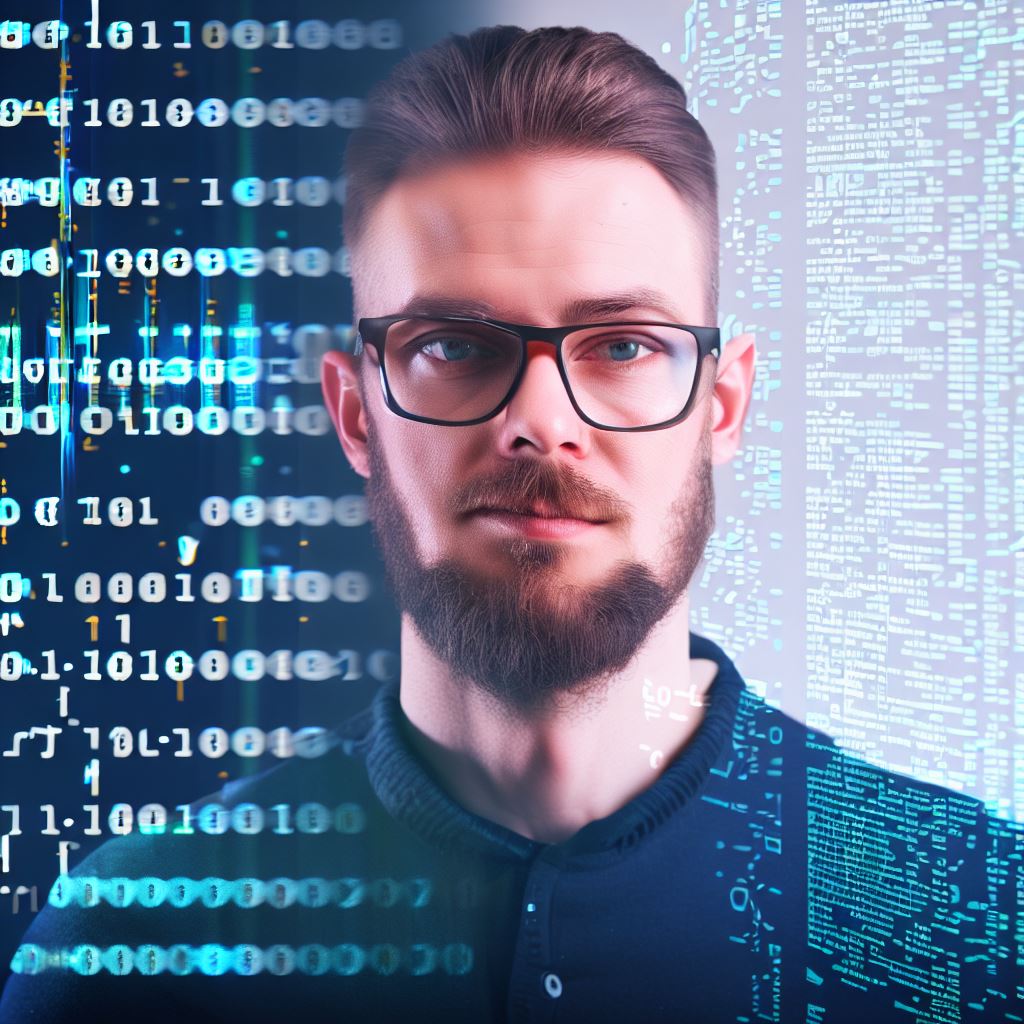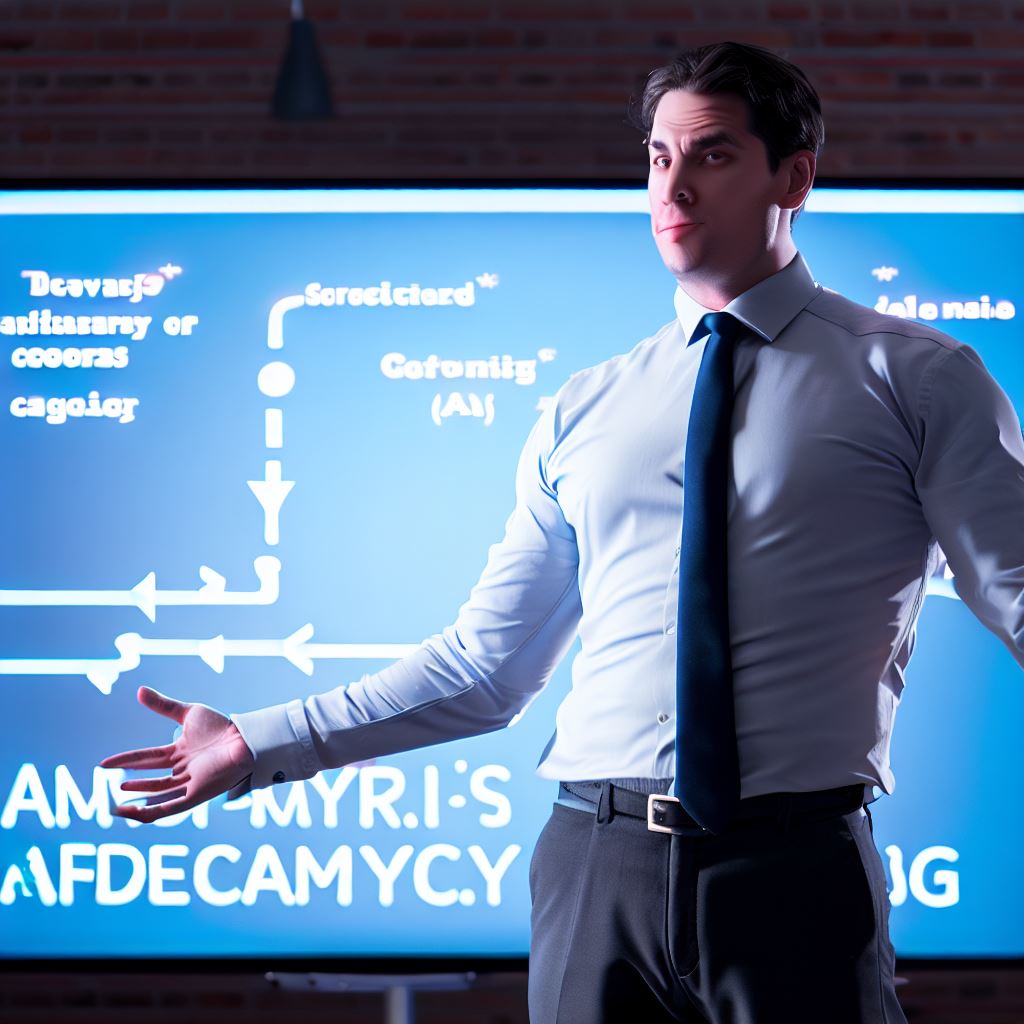Introduction
Coding Culture and Entertainment: Coding’s impact on U.S. pop culture and entertainment is undeniable. It’s a digital revolution that’s transforming the way we consume media.
From video games to special effects in movies, coding has seeped into various industries, elevating their capabilities.
This blog post aims to delve into the profound influence of coding on U.S. pop culture and entertainment. Let’s explore!
In recent years, coding has emerged as the driving force behind the evolution of U.S. pop culture and entertainment.
It’s not just about tech geeks huddled behind screens anymore; it’s a fundamental element shaping our entertainment landscape.
Consider the explosive rise of video games. Coding has given birth to immersive virtual worlds, where players embark on epic adventures.
Games like Fortnite and Minecraft are prime examples of how coding has revolutionized gaming, making it a global phenomenon.
In the realm of cinema, coding has become a creative powerhouse. CGI (Computer-Generated Imagery) employs intricate coding to bring jaw-dropping visual effects to life.
Films like “Avatar” and “The Avengers” rely heavily on coding to create breathtaking spectacles that captivate audiences worldwide.
Streaming platforms like Netflix use algorithms driven by code to recommend personalized content, reshaping how we consume TV shows and movies.
This coding wizardry ensures that you’re always hooked to the next binge-worthy series.
Music isn’t left behind either. Artists like Daft Punk and Deadmau5 employ electronic music production, deeply rooted in coding, to craft chart-topping hits that dominate the airwaves.
Coding’s influence on U.S. pop culture and entertainment is profound, from the way we game to how we experience movies and music.
This digital revolution has ushered in an era of limitless creativity, pushing the boundaries of what’s possible in our favorite forms of entertainment. Stay tuned as we explore this fascinating journey further.
Historical Background of Coding in Pop Culture
A. Integration of Coding in Movies and Television Shows
- Coding has been integrated into movies and television shows for decades, reflecting its growing popularity.
- In the 1983 film “WarGames,” coding was showcased as a means for global threats and hacking.
- TV shows like “Mr. Robot” have depicted coding as a powerful tool used by hackers to expose corruption.
- The use of coding in these media forms has helped shape public perception and interest in programming.
B. Famous Examples: “The Matrix” and “Halt and Catch Fire”
- “The Matrix,” released in 1999, revolutionized the portrayal of coding in pop culture.
- The film painted a futuristic world where humans were enslaved by machines, highlighting the power of coding.
- The famous “bullet time” scene showcased a visually stunning representation of coding and virtual reality.
- “Halt and Catch Fire,” a TV series set in the 1980s, explored the early days of the personal computer revolution.
- It depicted brilliant programmers competing with each other, showcasing the excitement and potential of coding.
C. Portrayal of Hackers and Programmers in Popular Media
- The portrayal of hackers and programmers in popular media often falls into certain stereotypes.
- Hackers are typically depicted as rebellious geniuses, capable of breaking into any system using their coding skills.
- Characters like Lisbeth Salander from “The Girl with the Dragon Tattoo” exemplify this stereotype.
- Programmers are often depicted as socially awkward individuals who are brilliant at solving complex problems.
- Shows like “Silicon Valley” have captured the quirks and challenges faced by programmers in the tech industry.
Coding has had a significant impact on U.S. pop culture and entertainment.
Tech Consulting Tailored to Your Coding Journey
Get expert guidance in coding with a personalized consultation. Receive unique, actionable insights delivered in 1-3 business days.
Get StartedFrom its integration into movies and television shows to the portrayal of hackers and programmers, the presence of coding has shaped public perception and generated interest in programming.
Famous examples like “The Matrix” and “Halt and Catch Fire” have showcased the power and potential of coding, while popular media has often relied on stereotypes when representing hackers and programmers.
As coding continues to evolve and play a crucial role in our digital world, its influence on pop culture is likely to continue growing.
Read: Coding Strand vs Template Strand: A Deep Dive into DNA
Coding’s Influence on Music and Performing Arts
A. The use of coding in music production and composition
- Coding plays a significant role in music production by enabling advanced sound manipulation and synthesis techniques.
- Artists and producers use coding languages like Pure Data and Max/MSP to create custom software instruments and effects.
- By coding their tools, musicians have greater control over every aspect of sound design and composition.
- Coding allows for the creation of complex generative music systems, where algorithms compose music in real-time.
- With coding, musicians are no longer limited to traditional instruments and can explore new sonic possibilities.
B. The rise of coding-based performances, such as live coding music
- Live coding music is a performance art form where musicians write and modify code on stage to create music.
- This unique form of improvisation blurs the lines between coding and musical expression
- Artists use coding languages specifically designed for live coding, such as Sonic Pi and TidalCycles.
- Live coders engage the audience by showcasing the live creation and manipulation of music through code.
- These performances bring an element of excitement and surprise, as the music evolves in real-time.
C. Artists who incorporate coding elements into their shows
- One prominent artist is Björk, who collaborated with programmers to develop innovative MIDI instruments and musical apps.
- She uses custom coding to create unique soundscapes and visuals during her live performances.
- Imogen Heap, another artist, created a pair of musical gloves called “Mi.Mu gloves” using coding and sensor technologies.
- These gloves allow her to manipulate sounds and control her performance using hand gestures.
- The Flaming Lips incorporate live coding visuals into their concerts through the use of synchronized LED screens.
Overall, coding has greatly influenced music production, composition, and live performances in the music and performing arts industry.
Through coding, musicians have expanded their creative possibilities, pushing the boundaries of sound and experimentation.
Live coding performances have introduced a new form of improvisation, captivating audiences with real-time music creation.
Artists like Björk, Imogen Heap, and The Flaming Lips are leading the way in incorporating coding elements into their shows.
As technology continues to advance, coding will likely play an even more significant role in shaping the future of music and performing arts.
Read: How Coding Memes Help Coders Cope with Stress

Gaming Industry and Coding
A. The relationship between coding and the gaming industry
- Coding plays a vital role in the gaming industry, as it is the foundation for game development.
- Developers use coding to create the complex algorithms and logic that drive game mechanics.
- Without coding, it would be impossible to bring virtual worlds, characters, and stories to life in games.
- Coding enables game designers to implement player interactions, physics simulations, and artificial intelligence.
- The gaming industry heavily relies on skilled coders to build, optimize, and maintain games.
- Coding is the backbone of multiplayer games, enabling players to connect and interact in real-time.
- The relationship between coding and the gaming industry continues to evolve, shaping the future of gaming.
B. How coding shapes game development and design
- Coding is essential for game development, allowing designers to create unique gameplay mechanics and features.
- Through coding, developers enable character animations, sound effects, and visual effects in games.
- Coding is used to program enemy behavior, level progression, and game balance.
- With coding, game designers can implement multiplayer features, allowing cooperative or competitive gameplay.
- Coding allows for the integration of virtual reality (VR) and augmented reality (AR) experiences in games.
- Developers use coding to optimize game performance, ensuring smooth gameplay and minimizing bugs.
- Coding empowers game designers to create user interfaces and menus that enhance the gaming experience.
C. The popularization of coding through gaming platforms like Scratch and Roblox
- Gaming platforms like Scratch and Roblox have revolutionized the way coding is taught and learned.
- These platforms provide a user-friendly interface that simplifies coding concepts for beginners.
- Scratch allows users to create interactive stories, games, and animations using visual programming blocks.
- By engaging with Scratch, aspiring programmers can develop problem-solving skills and logical thinking.
- Roblox offers a platform for users to build their games using Lua programming language.
- With Roblox, coding enthusiasts can bring their imaginations to life and share their creations with others.
- Gaming platforms like Scratch and Roblox have popularized coding among children and teenagers.
Coding has a significant influence on the gaming industry, shaping game development and design.
It serves as the foundation for creating immersive gaming experiences, implementing gameplay mechanics, and optimizing performance.
Additionally, coding has become more accessible through gaming platforms like Scratch and Roblox, making it easier for beginners to learn and enjoy coding.
As the relationship between coding and the gaming industry continues to evolve, we can expect even more innovative and exciting games in the future.
Build Your Vision, Perfectly Tailored
Get a custom-built website or application that matches your vision and needs. Stand out from the crowd with a solution designed just for you—professional, scalable, and seamless.
Get StartedRead: How the Coding Strand Affects Gene Expression: A Guide
Coding in Visual Arts and Film Making
With the integration of coding into various industries, its influence on U.S. pop culture and entertainment cannot be underestimated.
In this section, we will explore the impact of coding on visual arts and film making.
A. The impact of coding on visual effects and CGI in film
Coding has revolutionized the world of visual effects and computer-generated imagery (CGI) in the film industry.
Through the use of complex algorithms and programming languages, visual artists can create stunning and realistic digital effects that enhance the overall cinematic experience.
With coding, filmmakers can now create fantastical creatures, breathtaking landscapes, and mind-bending action sequences that were once only imaginable.
The advancement in CGI technology, made possible by coding, has allowed directors to push the boundaries of what can be portrayed on the big screen.
It is no longer limited to science fiction or fantasy genres; coding has brought CGI to all types of movies, from action-packed blockbusters to heartwarming dramas.
The seamless integration of visual effects has become a standard in contemporary filmmaking, captivating audiences worldwide.
B. The use of coding in digital art and interactive installations
Coding has also found its way into the world of digital art and interactive installations, offering new avenues for artistic expression and audience engagement.
Artists can now manipulate and transform digital media using coding techniques.
Through coding, digital artists can generate intricate patterns, manipulate colors, and create interactive elements within their artwork.
This allows for a dynamic and immersive experience for the viewer, blurring the line between the traditional and the digital.
Interactive installations, which combine physical and digital elements, have become increasingly popular in art exhibitions and museums.
Optimize Your Profile, Get Noticed
Make your resume and LinkedIn stand out to employers with a profile that highlights your technical skills and project experience. Elevate your career with a polished and professional presence.
Get NoticedCoding enables artists to create interactive experiences that respond to the audience’s movements, gestures, and touch.
C. Famous examples in the visual arts field that incorporate coding
Several renowned artists have embraced coding in their visual art installations. One well-known example is “The Bay Lights” by Leo Villareal.
This large-scale light installation on the San Francisco Bay Bridge features 25,000 LED lights controlled by complex coding algorithms, creating mesmerizing patterns and sequences.
Another notable example is the work of Karolina Sobecka, an artist known for her interactive installations.
Sobecka combines animation, projection mapping, and coding to create immersive experiences that blur the boundaries between reality and fiction.
Moreover, renowned artist Rafael Lozano-Hemmer utilizes coding and technology to create large-scale interactive art installations.
His works often involve audience participation, allowing viewers to influence and manipulate the artwork through various inputs and sensors.
Coding has made a significant impact on the visual arts and film making industries. It revolutionized how we create visual effects and CGI, elevating the cinematic experience.
Additionally, coding has opened up new possibilities for artistic expression and audience engagement in the realm of digital art and interactive installations.
As technology continues to advance, we can expect coding to play an even more prominent role in shaping the future of pop culture and entertainment.
Read: A Guide to Creating Your Own Hilarious Coding Memes
Gain More Insights: Mastering Google’s Coding Style: Tips and Tricks
Coding’s Influence on Social Media and Internet Culture
A. Coding’s Role in Social Media Platforms and Their Features
Coding has a significant role in the development and functioning of social media platforms.
By using various programming languages and techniques, developers create the features and functionalities that users enjoy.
For example, coding enables the creation of the news feed algorithm, which determines the content that users see on their social media timelines.
This algorithm takes into account factors such as user preferences, engagement, and individual connections to curate a personalized feed.
Coding also allows for the integration of features like direct messaging, tagging friends, and reacting to posts with emojis.
These functionalities enhance user interaction and make social media platforms more engaging and interactive.
B. The Influence of Coding on Viral Trends and Internet Memes
Coding plays a significant role in the proliferation of viral trends and internet memes.
Developers often create applications or scripts that generate memes and make them easily shareable across social media platforms.
By incorporating coding techniques such as image manipulation, text overlay, and automated caption generation, developers can create tools and algorithms that generate popular, relatable, or humorous content.
Furthermore, coding allows for the rapid spread of viral trends and memes by facilitating social media sharing and amplification.
Sharing buttons, hashtags, and algorithms that prioritize trending content all contribute to the widespread dissemination and popularity of these internet phenomena.
C. Coding Communities and Their Impact on Internet Culture
Coding communities have a significant impact on shaping internet culture.
These online communities provide a platform for developers to collaborate, share knowledge, and create innovative projects.
The open-source nature of coding communities, such as GitHub, fosters inclusivity and encourages individuals to contribute to collective projects.
These collaborative efforts often result in the development of new features, applications, and platforms that shape the way people interact and consume content on the internet.
Moreover, coding communities contribute to the democratization of technology, making it accessible to a broader audience.
Online tutorials, coding forums, and educational resources enable people from all backgrounds to learn coding skills and actively participate in internet culture.
In addition, coding communities also play a role in determining trends and setting standards within the coding and development industry.
The continuous exchange of ideas, best practices, and innovations helps shape the direction of internet culture and the evolution of social media platforms.
Overall, coding has a significant influence on social media and internet culture.
Through coding, social media platforms can provide engaging features, facilitate the spread of viral trends and memes, and empower coding communities that shape the internet culture we experience today.
Conclusion
A. Summarizing Main Points
In this section, we explored coding’s profound impact on U.S. pop culture and entertainment. We discussed:
- The role of coding in shaping video games, from Pong to modern AAA titles.
- How coding drives special effects and animation in movies and TV shows.
- The emergence of coding-centric characters in pop culture, like Mr. Robot’s Elliot Alderson.
- The intersection of coding and music, giving rise to digital composition and innovative performances.
- How coding fuels social media, influencing trends, memes, and viral content.
B. Emphasizing Coding’s Influence
Coding’s influence on U.S. pop culture and entertainment is undeniable.
It has transformed these sectors, pushing boundaries, and enhancing user experiences.
C. Future Impact
The future of coding in pop culture and entertainment is promising.
With emerging technologies like AI and VR, coding will continue to redefine how we consume and engage with entertainment, making it an ever-evolving and exciting field to watch.




